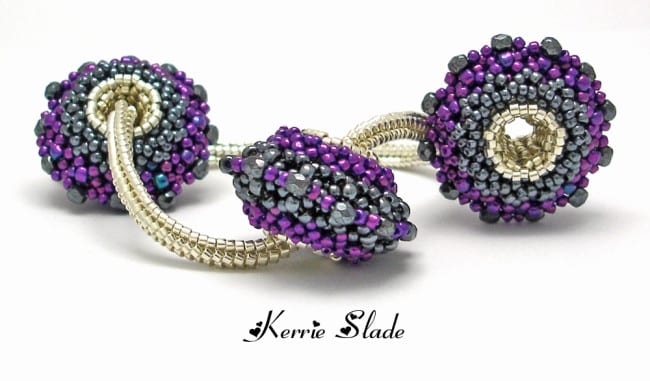 The art of stringing together tiny little beads to make something beautiful and unique totally fascinates me. So today, I’m really happy to bring you this interview with Kerrie Slade, an incredibly talented bead artist from the UK.
The art of stringing together tiny little beads to make something beautiful and unique totally fascinates me. So today, I’m really happy to bring you this interview with Kerrie Slade, an incredibly talented bead artist from the UK.
Kerrie has had her original beadwork patterns published in Beadwork Magazine and Beading Daily and exhibits her work around the world. I was curious to find out more about how Kerrie first started beading and what inspires her creative process.
1. When did you first begin beading and what inspired you to do so?
Around 13 years ago I was going through a really bad patch and suffering from depression. I needed something to try and focus my mind and although I hadn’t really done anything creative since I was a child, I started out by doing a little bit of cross stitch which I really enjoyed. Then I bought a cross-stitch kit, which contained a few beads to give the finished design some added sparkle and I can almost pinpoint that moment as if a light bulb went on in my head – that is the moment I discovered beads. I went on to buy a magazine that contained some square stitch designs, then I bought some beading books and set about learning everything I could and I became (and still am!) completely obsessed with beads.
2. How did you become so skilled in beadwork?
I wouldn’t say that I am skilled in beadwork as a whole but I have learned to do 2 or 3 stitches pretty well. I’ve never really tried RAW or CRAW, I still haven’t learnt bead crochet and I’m not that great at peyote, but ask me to do some brick stitch or herringbone and I’d be able to show you a trick or two! I have spent many thousands of hours quietly exploring these stitches and I would definitely say that practice is the key. Choose a stitch – try it flat, try it circular and try it tubular. Try it with big beads, try it with little beads and try it with both and then try mixing everything you have learnt and find out what works and what doesn’t look so great. Oh and don’t forget to jot down some notes so that you can do it all again when you want to.
3. What is your favourite beading stitch to use and why?
Brick stitch and herringbone are both definitely my ‘go to’ stitches as I know them inside out and I feel that I can create just about any shape I want to with those two stitches. I do keep meaning to learn other stitches but I think that maybe the fact that those two work so well for me has made me a bit stitch lazy. I do include a bit of ladder stitch, netting and picot edging in many of my designs as well as they can be great for starting or finishing a piece or for moving on from one stitch to another in the same piece.
4. What inspires your creativity when coming up with new beadwork designs?
Although I am a freelance designer, for the last three years I have been doing a lot of work with the Czech bead manufacturer Preciosa Ornela and so that has influenced a lot of my recent designs as I have been using a particular new bead shape, for example the Pellet ™ bead, Pip ™ or Ripple ™ and at the outset I know that I need to create something relatively simple, appealing and easy to write instructions for. However, when I have a bit more freedom I always turn to nature for my inspiration: flowers, leaves, birds and animals never fail to make me think about translating what I see into something beady.
5. What is your favourite beadwork piece that you’ve ever made?
Oh that’s a tricky one to answer! I’m a hard taskmaster and I am usually disappointed in my finished pieces because they never really look as good as I had imagined in my mind’s eye at the outset. You evolve too, so something I was pleased with in say 2008 (because it was the best I could do at the time) sometimes makes me feel embarrassed if it surfaces on social media now, but I try to learn lessons from that. If I had to pick a favourite, it would probably be something from the ‘Midnight Garden’ such as ‘The Family Tree’ – a leafy necklace with a couple of beady-eyed owls guarding their nest full of eggs.
6. What was the thinking behind your stunning Midnight Garden collection?
It’s funny because people often say I have an eye for colour, but I have no confidence in that ability and so I got to a point where sometimes I would spend longer choosing colours than I would beading the finished piece and I’d still be unhappy with it. So back in 2011 after I returned from a teaching trip to Germany, I rewarded myself with the gift of taking a year out to bead a fantasy collection using only one colour. I have always loved that grey rainbow finish as it reminds me of a moonlit night, so I chose to spend 12 months using nothing but grey beads and because the colour reminded me of moonlight, I chose the theme of a garden at midnight and gradually developed a collection of fantasy flowers, leaves, vines, hedgehogs and owls all beaded in grey with a few sparkly accents. My dear Mum passed away during that year so the garden is not really finished, but I will go back and add to the collection as some point as the discipline of sticking to one colour really helped me to focus on the form of the beadwork and taught me a lot.
7. How did you turn your beadwork into a business?
After a couple of years of learning to bead I felt ready to have a go at selling my work at a few local craft fairs and I also set up an Etsy shop, so at the point I knew I needed to register with the Inland Revenue and change from ‘hobby beader’ to ‘professional beader’ even if I wasn’t making much money. It’s hard to make a living at beading and I think you need to have fingers in lots of different pies (whether it be selling your finished work or teaching) but the most important thing for me is that I love what I do and I hope never to go back to working in a bank!
8. What advice would you have for others just starting out in beading who aspire to be a bead artist like you?
It’s like anything really, learn the ropes, be patient with yourself and try to get good at what you do, paying close attention to detail. If you want to turn your beading passion into a business you will need to learn about more than just beads though as you will need to be able to maintain a basic website, take presentable pictures of your work, market yourself and your work and join in with social networking. There is a lot to learn and it can all seem a bit lonely and overwhelming sometimes but it is also very rewarding and it can open up a world of exciting opportunities!
~~~~~~~~~~~~~~~~~~~~~~~~~~~~~~~~~~~~~~~~~~~~~~~~~~~~~~~~
Thanks so much to Kerrie for taking the time to be interviewed for this piece!
For further beading inspiration, don’t forget to check out Kerrie’s website, where you’ll find her amazing beadwork gallery and lots of tutorials aimed at all levels of beaders. You can also connect with her on Facebook.
Love this post? Please take a moment to share this with your social media followers!

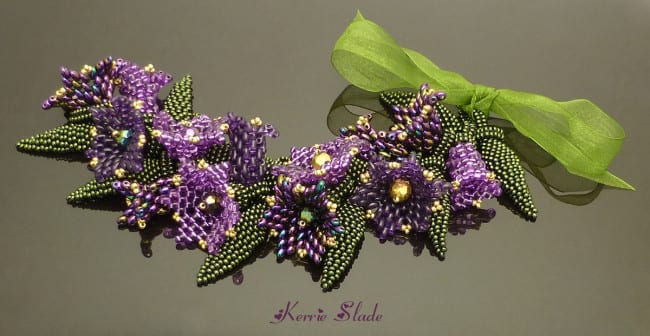
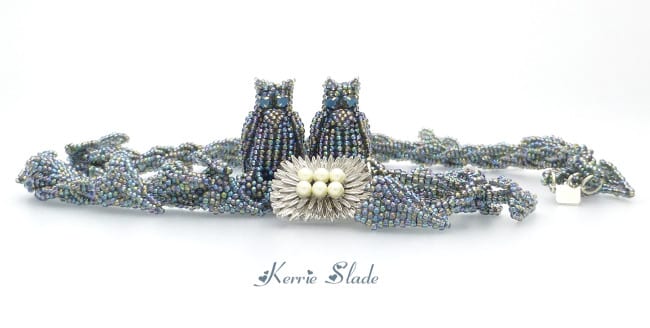
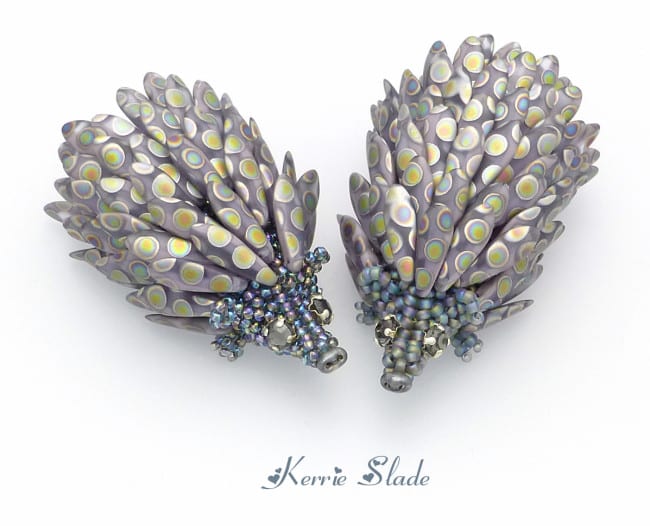
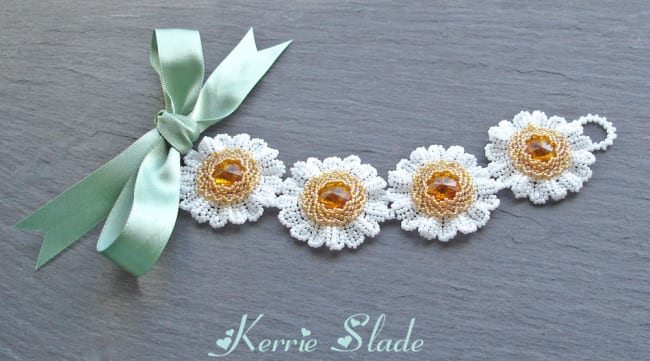



Leave a Reply